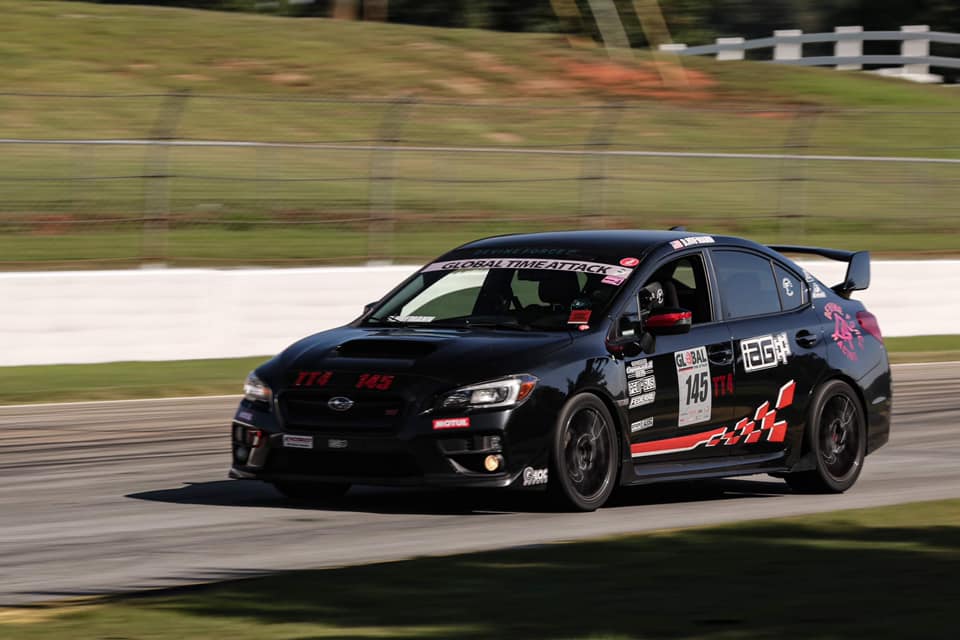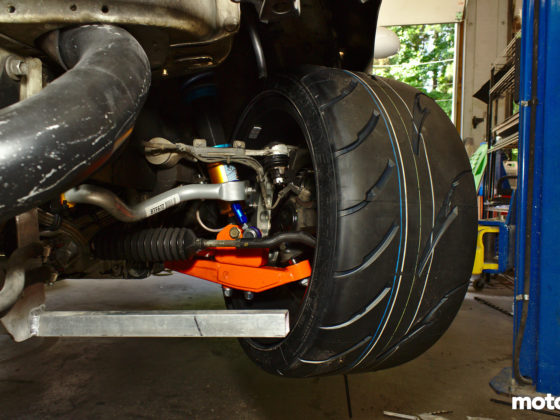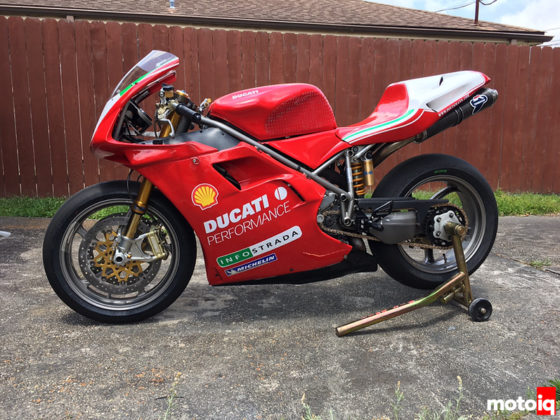Be sure when tightening the top nuts and screws, you follow the torque specs provided in the instruction manual by KW.

Changing the rear springs are very similar to changing the fronts. The biggest difference is there’s no camber plate but, a top plate with a spherical bearing for the shock shaft. Having the spherical bearing here is good because it gets rid of a big squishy rubber bushing that can deflect, causing the car to lose camber and also have undamped motion on the shock shaft. There are four Allen bolts that need to be loosened to gain access for the shock shaft nut to remove the rear springs as you can see in the pictures above. Brandon also applied some Loctite blue on the main bolts holding the top hats to the chassis to keep them from vibrating loose.

With the Clubsports assembled and the new stiffer springs installed, they can now be bolted into the car. The three bolts holding the front camber plate to the chassis are tightened, then the two bolts that attach the strut to the knuckle are put in place and tightened. A little bonus that KW provides is that the top strut to knuckle bolt hole is actually slotted which can help add additional degrees of negative camber adjustment. We ended up using all there was for a track use alignment settings.





6 comments
Nice setup, I’ve always been a fan of that KW stuff.
The rear compression knob looks unreachable though.
Also, In my opinion it’s better to do the initial camber setup with the plates centered, so that you can still increase the camber yourself afterwards if needed.
The compression adjuster is on top of the shock shaft accessible through the trunk. It doesn’t get any easier than that! When the car has trouble getting enough negative camber using all the adjustments it has, then the plates are not centered. The author talked about not having enough negative camber in the story. Since I worked on the car, it used all of its adjustment in that direction and some modifications will have to be made in the future to get more because the car still doesn’t have enough front negative camber even when adjusted all the way in that direction.
Hi Mike,
I had V3s on my GD back in the days, and I’m pretty sure that on 2 way KW shocks the compression adjuster is on the lower side of the strut, as stated on page 3 of this story (but I may be mistaken).
Looking at the photos, it looks like the knob is stuck between the shock body and the lower arm and barely accessible, but pictures can be misleading.
Regarding the camber, if you were trying to get the maximum possible camber right from the start, then yes it makes sense, mea culpa. I thought you had set a target value then noticed it was not enough when testing the car on track.
I hope my english is not too broken. Posting from France 🙂
Greetings
That WRX looks like a monster. Great setup!
Hey Mike, What would be the optimal alignment settings (for the track with the VA chassis) front and rear if given full adjustablility?
that is a too general question to really answer. It has to be determined through testing.